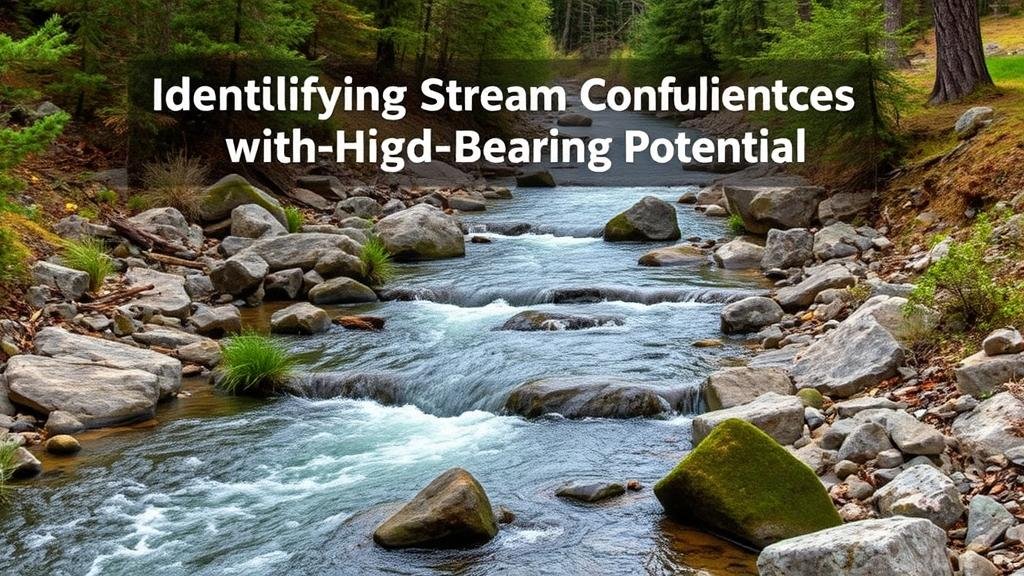Identifying Stream Confluences with High Gold-Bearing Potential
Identifying Stream Confluences with High Gold-Bearing Potential
The identification of stream confluences with high gold-bearing potential encompasses both geological principles and practical applications in the field of prospecting. Understanding the interplay of hydrology, geology, and sediment dynamics is essential for gold prospectors looking to target lucrative areas. This article explores methodologies for identifying these critical zones, bolstered by relevant case studies and applicable data points.
Understanding Gold Deposits and Stream Dynamics
Gold deposits occur in various geological environments, often concentrated in alluvial deposits within stream beds. When two or more streams converge, they typically foster unique sediment dynamics that can lead to gold accumulation in specific locales:
- Hydraulic Sorting: The convergence results in altered water velocities, which can cause different particle sizes, including gold, to segregate based on density.
- Increased Turbulence: Stream confluences often create eddies and other turbulence patterns that can trap heavier materials.
- Natural Bar Formation: Sandbars and gravel bars formed at confluences may serve as primary deposit sites for gold.
Geological Indicators of Gold-Bearing Potential
Several geological characteristics can indicate the potential for gold in stream confluences:
- Proximity to Primary Sources: Streams that drain mineral-rich mountain ranges or areas known for lode gold deposits often yield higher concentrations of gold.
- Presence of Specific Rock Types: Gravel deposits containing quartz, schist, or other metamorphic rocks are frequently associated with gold.
- Historical Mining Data: Previous mining activities in nearby areas can serve as a useful indicator of gold presence in confluential zones.
Case Studies in Successful Gold Prospecting
Historical and contemporary case studies illustrate the efficacy of targeting stream confluences for gold prospecting:
- The Klondike Gold Rush: During the late 19th century, prospectors found significant gold-bearing deposits in confluences along Bonanza Creek and Eldorado Creek, primarily driven by observations of sediment build-up and water turbulence.
- Californias Mother Lode Region: Modern exploration continues to identify gold in stream confluences, utilizing geospatial analysis to predict potential locations based on historical mining success.
Methodologies for Identifying High-Potential Areas
Prospectors can employ various strategies to systematically identify confluences with high gold-bearing potential:
- Field Surveys: On-the-ground reconnaissance helps assess the geology and sediment composition of confluences.
- Geographic Information Systems (GIS): Utilizing GIS software enables the analysis of topographical data and stream patterns, helping pinpoint high-potential confluences.
- Remote Sensing Technology: Aerial imagery and satellite data can help identify changes in vegetation and landforms indicative of potential gold deposits.
Challenges and Considerations
While there is considerable potential in stream confluences, prospectors must navigate challenges:
- Legal Regulations: Ensure compliance with local mining laws and regulations, as legal frameworks vary significantly.
- Environmental Impact: Consider the ecological implications of gold prospecting activities, including the disruption of wildlife and natural habitats.
Conclusion
Identifying stream confluences with high gold-bearing potential requires a blend of geological knowledge and practical application of modern technology. By understanding the factors that contribute to gold accumulation in these areas–such as sediment dynamics and geological indicators–prospectors can increase their chances of discovering lucrative deposits. Plus, methodologies like GIS and remote sensing enhance the prospecting process, allowing for a more targeted approach to identifying promising locations.
The pursuit of gold can be both rewarding and environmentally challenging; thus, prospectors should always weigh potential rewards against ethical mining practices. Knowledge, combined with responsible exploration, will pave the way for successful and sustainable gold prospecting.



